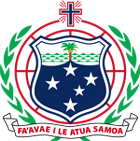“Reinvigorating Labour Mobility Cooperation for Development”
Reverend Dr Siaosi Salesulu,
Excellencies
Head of PACER Plus Implementation Unit
Senior Officials
Distinguished Guests and Participants
Talofa lava and a very warm welcome to Apia
It is my pleasure to welcome you all to the first face to face Pacific Labour Mobility Annual Meeting since the COVID-19 outbreak. Samoa, like other countries, was not immune to the impacts of the pandemic. The economic effects, the pressures on our health systems and the overwhelming uncertainties it created were the realities we had to face. However, we have learnt to adjust our response and activities to living in a post-COVID environment.
The PLMAM is a significant medium by which we are advancing inclusive regional labour mobility cooperation in the Pacific. I would like to acknowledge the support of PACER Plus Signatories and the ALM Participants for giving Samoa the opportunity to host this meeting, even though Samoa hosted the virtual PLMAM this time last year.
I thank the PACER Plus Implementation Unit as the Labour Mobility Secretariat for facilitating the logistics and meeting arrangements. Thank you to the Government of Australia and the Government of New Zealand for the continuous support towards PLMAM including support through the PACER Plus Development Economic Cooperation Work Programme and the Arrangement on Labour Mobility (ALM).
For Samoa, the COVID-19 Pandemic highlighted numerous vulnerabilities such as the limitations of our public health systems and response to global pandemics; our dependence on tourism receipts which we envision will take years to recover[1], and the challenges faced by our local businesses, to name a few.
To counter the adverse effects of COVID19, the Government of Samoa had issued several stimulus packages since the year 2020, which included substantial support from our international development partners and UN agencies. In the 12 months since our new Government was deployed from September 2021 to September 2022, Stimulus packages amounting to $44.1 million Samoan tala have been disbursed to boost our businesses, especially the tourism industry as well as our communities. For the financial year 2022 to 2023, the Government has earmarked $62 million tala as part of its stimulus packages that are aimed at helping to revive, boost and sustain our economy.
The Government of Samoa is thus committed to growing a diversified economy that is sustainable and resilient to global, national and local pressures, whilst ensuring that we continue to support measures that reflect local needs and opportunities that further enhance our national resilience.
In this regard, the Pathway for the Development of Samoa 2021/2022 to 2025/2026 highlights “Increased Labour Mobility” as a key Priority area with our aspiration to expand international labour market opportunities for those living in Samoa, in a sensible and manageable way. Expected outcomes for this key Priority area includes increased deployments, expanded numbers of labour mobility schemes and Samoa’s professional workers’ footprints in the Pacific regions increased.
Since the COVID19 Pandemic, Labour Mobility opportunities have become even more critical to help support our economic and social recovery efforts particularly at the household level. The contributions by Seasonal Workers to improving the standard of living of their families and Samoa’s economic recovery during these COVID times is perhaps best reflected in the substantial increase in Remittances that Samoa received in the 12 months period that coincided with the implementation of our new Government. During the 12 months to September 2022, Samoa received a total of 791.7 million Remittances, a substantial increase from the $607.8 million remittances in the equivalent 12 months to September 2021. Whilst I’m sure that our Seasonal Workers had contributed significantly to this increase in Remittances into Samoa’s economy, unfortunately, I am unable to state what the actual proportion of the Remittances are accounted for by Seasonal Workers since these are not sufficiently captured yet in our national statistics.
Despite the successes achieved to date in the Labour Mobility Schemes that Samoa partakes in, numerous challenges remain, which prompts the need for us to ensure that a balanced approach is considered in line with our other national development priorities. For instance, the concerns regarding “brain drain” due to some of our semi-skilled and skilled workers being sent overseas under the Labour Mobility Schemes and the concerns raised by our local employers who have lost workers that they’ve trained and invested in their upskilling, are crucial issues that I’m certain, not only Samoa but also all our labour sending Pacific Island countries need to seriously address.
The theme of this Meeting “Reinvigorating Labour Mobility Cooperation for Development” reiterates the opportunity for all labour mobility stakeholders to re-engage, reset and re-commit to advancing an effective level of cooperation that can enhance mutually beneficial development gains.
I believe that such level of cooperation also needs to take into account the foundations of our culture and heritage which have ensured social harmony in our Pacific Islands region. There is no denying the fact that increased levels of workers from Samoa migrating to NZ and Australia under the Labour Mobility schemes, have affected the very core of our families, the fabric that holds together our communities through families being separated for prolonged periods of time and other social issues that have arisen.
I believe there will be rich knowledge sharing throughout the next three days, and I wish all Participants a successful meeting and an enjoyable stay in our Beautiful Samoa.
Soifua ma ia Manuia.
[1] The World Tourism Organisation estimates that it could take up to four years for international tourism, an essential source of jobs and livelihoods, to recover to levels observed in 2019.

